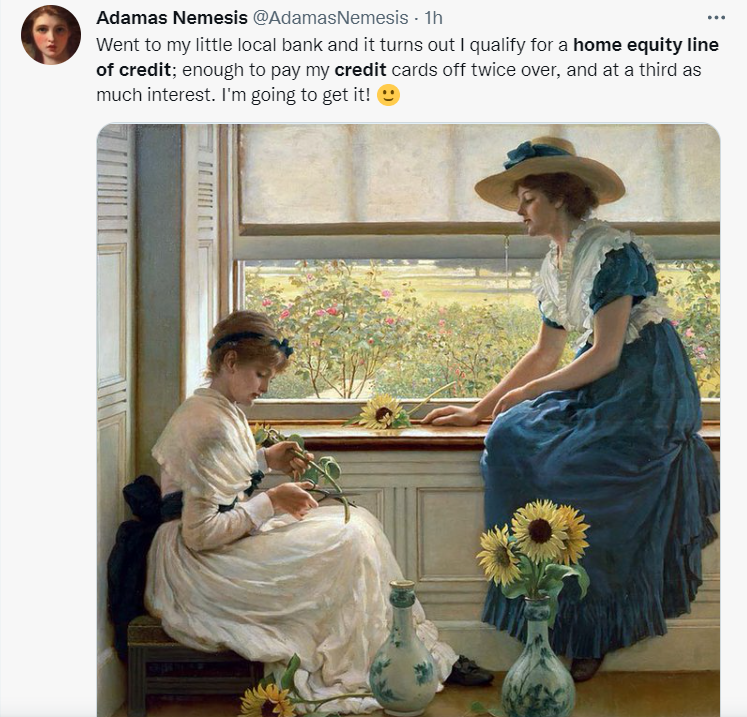What is HELOC? What are the pros and cons? Here is how a HELOC can help you—and what to look out for

A HELOC—or a home equity line of credit—is essentially a second mortgage that provides you access to funds based on the value of your home. Like a credit card, you can draw from a home equity line of credit and repay all or some of it each month.
There are many benefits to a HELOC, such as the ability to withdraw money for years and only paying interest on what you withdraw. Another benefit is that you can use the money for pretty much anything, most commonly to consolidate debt or to put back in your home.
But HELOCs also come with risks.
Before going with a HELOC, it is critical to do your research to see if the pros outweigh the cons for your specific financial situation. Here is everything you need to know about a HELOC. To the mortgage professionals who frequently read our site, we encourage you to send this article along to your clients who have questions about HELOCs.
How does a HELOC work?
A HELOC allows homeowners to tap into the value of their home for money. Different from other financing options, HELOCs also offer a line of credit that allows you, the homeowner, to withdraw money, repay, and then withdraw more as needed during the draw period. This can be a great strategy for some homeowners—but there are downsides.
In other words, HELOCs function like a credit card; as you repay your outstanding balance, your amount of available credit is replenished. The draw period for most HELOCs is between 10 and 15 years, during which time you can withdraw and replenish your funds as you like. In this period, you can also make interest-only payments. When you enter the repayment period—which is usually between 10 and 20 years—you start making monthly payments on the principal and the interest to your lender.
Most HELOCs have adjustable interest rates, meaning that as baseline interest rates increase or decrease, the interest rate on your HELOC will adjust as well. The interest on your HELOC will more closely resemble a mortgage rate than a credit card rate, however, since it is secured against the value of your property.
Lenders set your rate first with an index rate. Depending on your credit profile, your lender will then add a markup. In most cases, the higher your credit score, the lower your markup. The markup is known as the margin. Prior to signing off on the HELOC, it is important to see the amount.
HELOC: How to qualify
If you want to qualify for a HELOC, you must have home equity available. In other words, the value of your property must be more than the amount you owe on it. Typically, you can borrow as much as 85% of your home’s value minus the amount you owe.
Before being approved for a HELOC, lenders will generally look into the same areas of your financial life they would when you applied for your first mortgage, including:
- Credit score
- Credit history
- Employment history
- Monthly income
- Monthly debts
While these are the basics of what lenders will look into, there are other HELOC requirements. These lender requirements do vary, but typically, you will need the following to get a HELOC:
- A debt-to-income ratio that is 40% or less
- A credit score of 620 or higher
- A home value that is at least 15% more than you owe.
When applying for a HELOC, it is important to speak with your lender to better understand the financial information they need to help you qualify as well as any lender requirements.
What are the downsides of a HELOC?
As mentioned, there are downsides of a HELOC. To give you a better idea of whether it is the right option for you, here is a quick look at five potential downsides:
- Variable rates
- Payment shock
- Home as collateral
- Potential prepayment penalties
- Ongoing fees
Let’s take a closer look at each to gain a better understanding of the downsides of a HELOC:
1. Variable rates
Because HELOCs have variable rates, the rate you are charged can change. These variable interest rates are usually linked to the prime rate, meaning when that rate increases or decreases, the rate on your HELOC will increase or decrease with it. Since the prime rate changes often, this variable rate can make budgeting for HELOC payments a challenge.
To avoid any surprises, it is best to budget wisely and be prepared for sharp interest rate spikes. You can better prepare yourself for this scenario you can estimate your payments with rate increases of up to 2%.
2. Payment shock
During the draw period, HELOCs allow for low, interest-only payments. However, this is not always a positive—which is especially true if you withdraw a lot of money. In that case, you may very well have to pay a significant amount in payments after you enter the repayment period.
3. Home as collateral
When you get a HELOC, your home is essentially used as collateral. Because this lessens some of the risk, this arrangement allows lenders to offer lower interest rates and more favorable terms. It is important to note, however, that it still carries significant risk—especially to you, the borrower. For instance, if you fail to make your payments, the lender can foreclose on your property to recoup the debt.
It is therefore critical that you manage your line of credit properly, as well as make room in your budget for fluctuating monthly payments.
4. Potential prepayment penalties
If you close your HELOC too fast after opening it, some lenders will charge you a fee. Lenders can also charge you for the closing costs it covered for you. Therefore, if you want a HELOC, it is better for you to ensure you stay in the home for at least a few years. Some of these prepayment penalties include closing on the loan within the first three years.
5. Ongoing fees
Some of the ongoing fees typically included in a HELOC are transaction fees, annual maintenance fees, and other ongoing costs that you will have to pay throughout the life of your loan. If you go too long without withdrawing money, there may even be costs for inactivity.
What is a HELOC good for?
While there are downsides, HELOCs also offer many advantages. Here is a quick look at six things a HELOC is good for:
- Withdraw for years
- Interest on what you borrow
- Use the money however you want
- High loan limits
- Low payments (at the beginning)
- Tax deductible interest
Here is a deeper look at what we mean by each:
1. Withdraw for years
The ability to withdraw money for many years is one of the biggest upsides of a HELOC. You have an extended access to cash, meaning you can withdraw $5,000 here, another $20,000 there, repay it, and then withdraw more. Because of this, HELOCs are ideal for paying recurring expenses such as tuition or unexpected medical bills, repairs, and other charges.
2. Interest on what you borrow
Another major benefit of HELOCs is that you only have to pay interest on the money that you actually withdraw. For instance, if your credit is for $40,000 but you only use $15,000, you will only be on the hook to pay interest on the $15,000—not the full $40,000.
Having to pay interest on only what you borrow will help to limit your long-term interest costs, especially compared to other loan options. Other options usually charge interest on the full loan amount right from the very beginning.
3. Use the money however you want
With a HELOC, there are no restrictions for how you spend the money you withdraw. While many homeowners spend the funds on home renovations and repairs, other homeowners spend them on things totally unrelated to their properties, such as consolidating debt or even a vacation.
In other words, HELOCs offer a similar flexibility to a credit card; you make payments on what you withdrew, repay it, then withdraw again for everything from higher interest credit cards, college tuition, landscaping, home improvements, and remodeling, or even paying off credit cards which have a higher interest rate... just don’t go and fill those credit cards up again!
 Source: Twitter
Source: Twitter
4. High loan limits
HELOCs potentially offer access to large sums of money, depending on the equity you have in your home. You could even access as much as $500,000 in funds from certain lenders, which is significantly more money than most other financial products can provide.
Compared to unsecured loans, credit cards, and lines of credit, HELOCs typically offer larger loan amounts and lower interest rates. Your credit score and how much equity you have will ultimately determine how much you will qualify for.
5. Low payments (at the beginning)
Typically, you only have to pay interest on a HELOC during the draw period. This arrangement helps keep the monthly cost low, especially in the beginning, which is beneficial if you are on a tight budget or need to preserve your cash flow. Keep in mind, however, that once you enter the repayment period, your payments will rise to include interest and principal.
6. Tax deductible interest
It is a great idea to do your research on what is tax deductible when it comes to HELOCs. In certain instances, you might be able to deduct the annual interest costs of your HELOC on your federal tax return.
According to the IRS, this mainly pertains to money borrowed to buy, build, or substantially improve your property. If you are looking for a tax deduction, it is important to keep that in mind. Other HELOC expenditures, such as consolidating debt or purchasing an investment property, are not tax deductible.

What is the difference between HELOC and home equity?
Home equity is the market value of your home minus the amount you owe on your mortgage. The basic formula to determine your home equity is as follows:
Home value – loan balance = home equity
A home equity loan is a loan you take out against the value of your property. The main differences between a HELOC and a home equity loan are how you receive the money and how you repay the loan. To gain a better understanding of the differences and nuances of a HELOC and a home equity loan, let’s take a closer look at each type.
HELOC
HELOCs function like credit cards, allowing you to withdraw as much money as you want up to the credit limit during the draw period, which is typically up to 10 years. Your credit revolves, which lets you reuse it as you pay down the HELOC principal.
With a HELOC, you can also select interest-only payments or combine interest and principal payments. The latter may be the best option for you if you have to repay the loan quickly.
Because HELOCs are commonly offered at variable rates, your monthly payments might decrease over the life of the loan, depending on market fluctuations. However, lenders may offer fixed-rate HELOCs that carry higher initial interest rates and sometimes extra fees.
After the draw period, you then have to pay the remaining principal balance and interest on the HELOC. This is called the repayment period, which can run from 10 to 20 years. As mentioned, if you use the HELOC for a substantial home renovation, the interest on it could be tax deductible. It is therefore important to understand the conditions of your HELOC, as well as any potential benefits.
Home equity loan
A home equity loan, on the other hand, is like a second mortgage; it is a debt secured by your home beyond your first mortgage. A home equity loan is paid to you as a lump sum. After you get the loan, you start repaying it immediately at a fixed interest rate, which means you repay an arranged amount every month for the life of the loan (five, 10, or 30 year).
Home equity loans are ideal if you have a significant expense that you need to repay quickly. Home equity loans are also stable because of the consistent monthly payments.
As we have seen, there are innumerable uses for a HELOC—its flexibility is its major strength. But the risks are also significant. After all, you are using your home as collateral, which means, if you are unable to make your repayments, the lender can foreclose to recoup the costs. To decide if a HELOC is the right move for you, you simply need to weigh the pros and cons. If it makes sense for you, you may have a source of cash for a long time to come.
Do you have experience with a home equity loan? Was it a good idea for you? Let us know in the comment section below.



